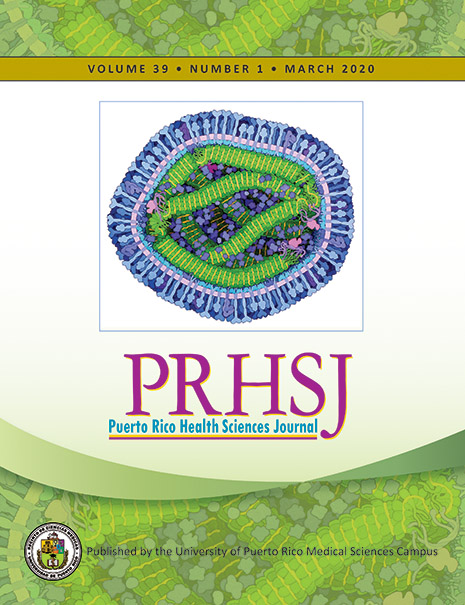Abstract
Objective: To describe the characteristics upon presentation of a cohort of Hispanic patients living in Puerto Rico with ocular mucous membrane pemphigoid (MMP). Methods: Retrospective chart review of subjects with ocular MMP at one academic institution and one private practice. Patients with clinical evidence of ocular MMP, along with a positive mucous membrane biopsy revealing linear antibody or C3 deposition in the basement membrane zone, or with a positive indirect immunofluorescence assay were included. Descriptive statistical analysis was performed. Results: Eight patients with ocular mucous membrane pemphigoid were identified. The median age upon presentation was 60.5 years; however, 2 patients were in their 4th decade and one in the 5th decade of life. Females constituted 62.5% of the cohort. All patients presented with stage III ocular MMP in at least one eye and 50% had history of trichiasis. Seven out of eight patients (87.5%) had extraocular symptoms for a median duration of 36 months (range 2-144 months). The most common site of extraocular involvement was the oropharynx, present in 87.5% of patients. Conclusion: Our results suggest that in Puerto Rico ocular MMP most commonly presents in the seventh decade of life. The presence of symblepharon, trichiasis or oropharyngeal mucosal disease should prompt further evaluation and consideration for immunopathological tissue analysis and an IIF assay.
Authors who publish with this journal agree to the following terms:
a. Authors retain copyright and grant the journal right of first publication with the work simultaneously licensed under a Creative Commons Attribution License that allows others to share the work with an acknowledgement of the work's authorship and initial publication in this journal.
b. Authors are able to enter into separate, additional contractual arrangements for the non-exclusive distribution of the journal's published version of the work (e.g., post it to an institutional repository or publish it in a book), with an acknowledgement of its initial publication in this journal.
c. Authors are permitted and encouraged to post their work online (e.g., in institutional repositories or on their website) prior to and during the submission process, as it can lead to productive exchanges, as well as earlier and greater citation of published work (See The Effect of Open Access).
